Tire tread naturally wears down over time. No surprise there. But what happens when your tires wear down too much and become bald? And just how bald is “bald?” Bald is the point at which it's essential to replace your tires — for your safety and others on the road. Learn the signs of bald tires and what can happen if you drive with bald tires.
Just as a person is bald if they have little to no hair, a tire is bald if it has little to no tread. With each trip you take in your vehicle, the tread of your tires wears down. If you drive too long with worn-down tread, your tires can become bald.
What qualifies as a bald tire? A tire with at least one groove whose tread depth reaches 2/32 of an inch is technically considered bald. A 2014 survey by the Rubber Manufacturers Association found 12% of U.S. motorists reported at least one of their tires was bald.
It’s not hard to spot a bald tire. Many new tires come with what are known as indicator bars, also called parallel wear bars. If the tread is flush with the wear bars, you’ve got a bald tire. Even without those bars, you can tell whether the tread has worn down a lot simply by inspecting the tire.
You can check the depth of tire tread with a tread depth gauge. Tread depth gauges are available at auto parts stores and online.
You also can measure the tread depth by sticking an upside-down penny into a tread groove. If you can see all of Abraham Lincoln’s head, you should replace the tire. When you do this test, you might notice that some tread sections are deeper than 2/32nds of an inch. However, if any part of a tire fails the penny test, the tire should be replaced.
For road-safety best practices, Firestone Complete Auto Care recommends replacing your tires before they wear this much — around 4/32nds of an inch. Or, if you want to think of it in “penny test” terms, substitute the penny for a quarter, and stick it heads-down into your tires’ grooves.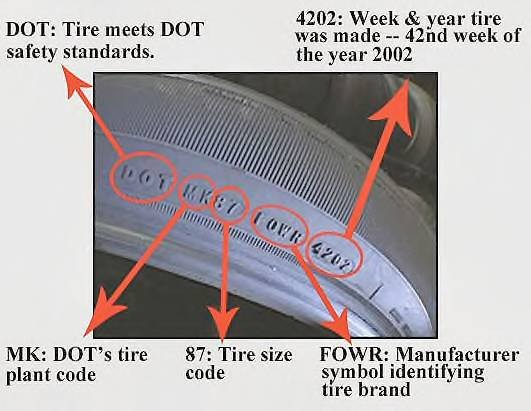 If Washington’s head is visible at any point, you should consider getting new tires.
If Washington’s head is visible at any point, you should consider getting new tires.
Several factors can contribute to tires becoming bald:
A tire that lacks the proper amount of air is underinflated, while a tire that’s carrying a bigger load of air than it’s supposed to is over-inflated. Both of these conditions can cause stress on a tire, leading to increased treadwear.
An unbalanced tire means there’s an uneven distribution of weight across the wheel or rim. At the same time, a misaligned tire (also called a misaligned wheel) refers to a vehicle suspension that needs to be adjusted. If these problems aren’t fixed, the tires might wear unevenly, potentially leading to baldness.
If you don’t keep up with tire maintenance, you boost the odds of underinflated, unbalanced, or misaligned tires. All of those can cause bald tires.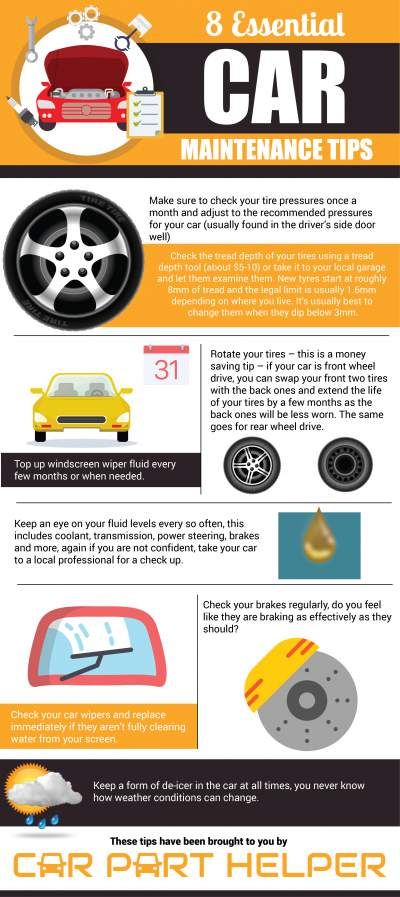
Bald tires might seem like they’re not a big issue, but they can actually produce big problems behind the wheel.
Driving around on treadless tires isn’t just bad for your driving experience. It can also jeopardize everyone’s’ safety, including that of your vehicle and the other motorists’ on the road.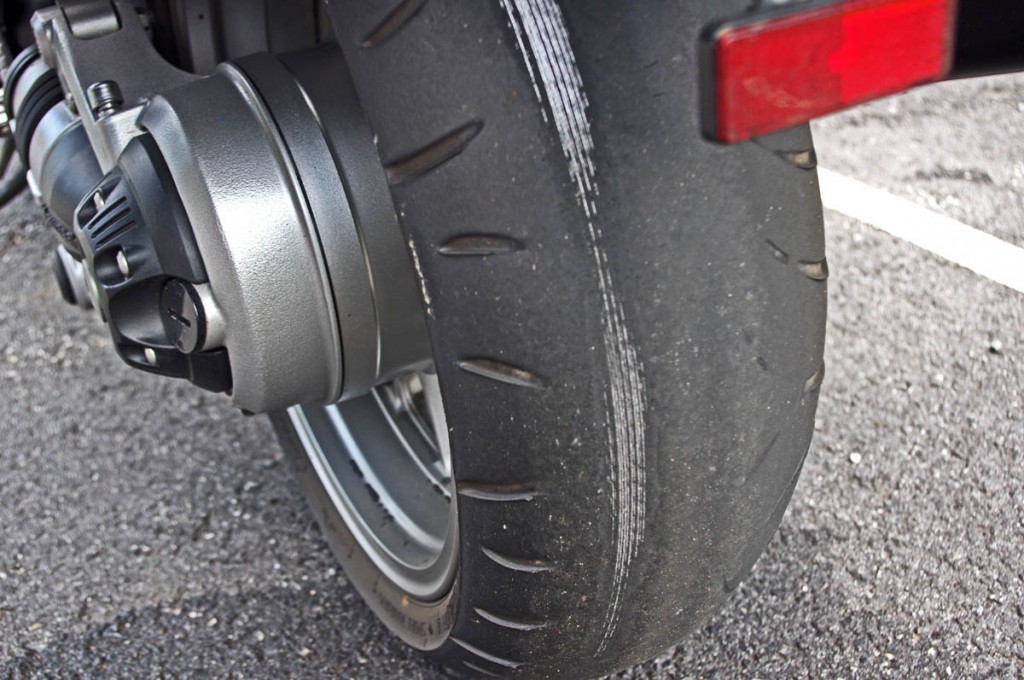 Use these tips to watch for bald tire warning signs, and bring your vehicle to Firestone Complete Auto Care when it’s time for a new set of tires.
Use these tips to watch for bald tire warning signs, and bring your vehicle to Firestone Complete Auto Care when it’s time for a new set of tires.
It’s the tire’s tread that provides the traction you rely on for a safe and smooth drive. As the miles add up, it wears down. Enough wear and you have bald tires.
Bald tires are risky to drive on for two reasons - they’re more susceptible to punctures, and they no longer have adequate tread depth to channel water from under the tread. Which means that, when it rains or snows you may lose traction (and control over your vehicle). For these reasons, bald tires are extremely risky to drive on and should be replaced.
Learn what bald tires are, causes, signs, and the risks associated with driving on them.
Simply put, balding tires are tires that have minimal or no tread left.
A tire's tread wears down with each mile driven, and there are various factors that affect how quickly it wears.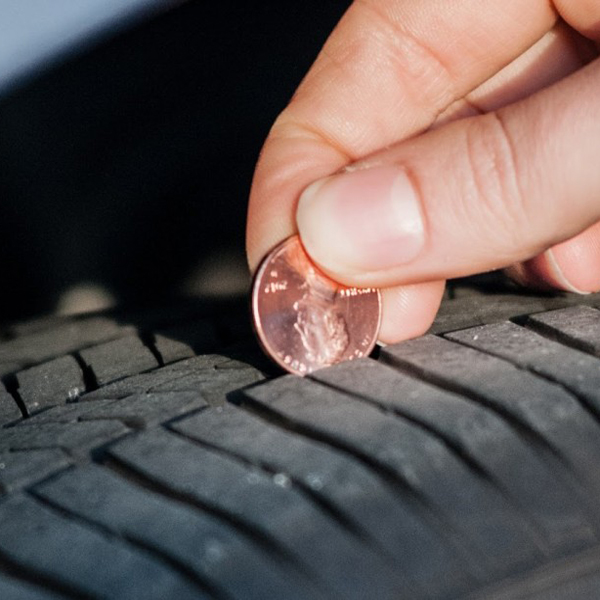 Knowledgeable drivers are proactive in tire care and can prevent the risk of driving on bald tires.
Knowledgeable drivers are proactive in tire care and can prevent the risk of driving on bald tires.
Underinflated and Overloaded Tires
It’s the air inside the tire that carries the weight of the vehicle. A tire without enough air to carry the load is considered “under-inflated”. This is bad because it causes a lot more stress on the tire than it was designed for. A tire carrying a load greater than it was designed for is considered “overloaded”. Just like the under-inflated tire, it’s subject to higher stresses than it was engineered for. In both cases, the result is reduced treadwear, and in extreme situations the tire could fail, which people often refer to as a “blowout”.
Unbalanced and Misaligned Tires
Tires and wheels often have areas that are a bit heavy or light. “Balancing” the tire/wheel assembly involves the use of a machine which tells the technician to add weight in specified places to make the tire/wheel’s weight equal all over. If this isn’t done, the tires may not wear evenly, and the driver may feel a vibration at higher speeds.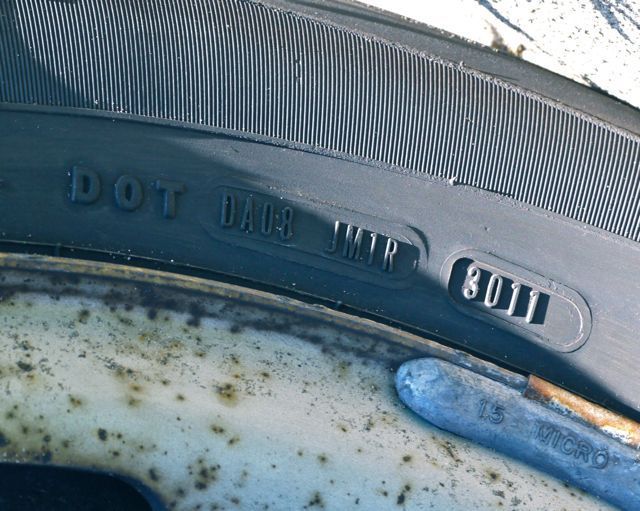
Alignment is important because car makers design the suspension so that tires will roll properly for stable handling, strong traction and good treadwear. When the suspension gets out of specification it’s described as being “out of alignment”. That means the tires are no longer rolling straight; they’re rolling at an angle instead of straight ahead or are tilted from vertical. This often results in increased treadwear, uneven treadwear, and in some cases, the car “pulling” to the left or right.
Neglected Tire & Vehicle Maintenance
Keeping up with the proper maintenance helps a driver to be more aware of when tires are wearing. Neglecting tire maintenance increases the chance of driving on unaligned, underinflated, or unbalanced tires, which, in the end, may result in driving on bald tires.
Recognizing the signs can help drivers know when their tires are going bald and make them aware of when replacement is needed.
Visible Wear Bars
Once the tread is completely worn, tire wear bars (“Treadwear Indicators” in engineering-speak) become more noticeable.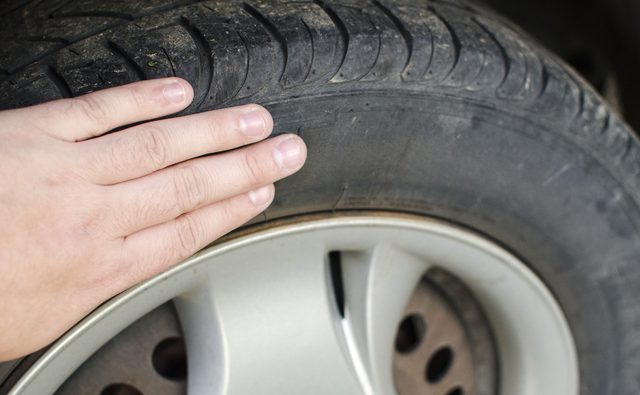 They’re about the width of a pencil, and they run across the base of the tread from side to side. They’re most obvious once the tread depth reaches 2/32”.
They’re about the width of a pencil, and they run across the base of the tread from side to side. They’re most obvious once the tread depth reaches 2/32”.
If the tread is worn down to the treadwear indicators the tire is no longer safe or legal for use and must be replaced.
Seeing Low Tread
If it appears the tread is heavily worn, you may check it with this simple and effective tread check at home:
Take a penny and insert its edge into a groove in the tire’s tread so it touches the bottom.
The penny should be placed so that Lincoln’s head is inserted into the tread
If the top of Lincoln’s head is fully visible, the tire’s tread depth is at or below 2/32” (the legal minimum) and the tire should be replaced.
Cracks and Bulges
You should perform an overall visual inspection of your tires periodically, especially if you feel or hear anything unusual from them when driving. Look for cracks or cuts deep enough to expose the steel belts or body cords. Also check for unusual bulges in the tread or sidewalls - they could be a sign of internal damage. If you notice something that you’re not sure of, don’t hesitate to take it to a professional to have it checked.
Also check for unusual bulges in the tread or sidewalls - they could be a sign of internal damage. If you notice something that you’re not sure of, don’t hesitate to take it to a professional to have it checked.
Driving on bald tires can result in vehicle damage from either tire failure or loss of vehicle control, and either is likely to come with an unwanted repair bill. Prevent unnecessary expenses and risks by replacing bald tires immediately.
Lost Control and Hydroplaning
When it rains, driving on bald tires increases the chances of skidding or hydroplaning. and possible accidents, needed repairs, and hefty insurance costs.
Poor Brakes
When driving, a vehicle’s brakes are trusted to work no matter the speed. But brakes don’t provide traction, tires do. So, when driving on anything other than a perfectly smooth road free of sand, dirt and debris, bald tires compromise your brakes’ ability to stop by providing reduced traction Poor braking efficiency increases the chance of being involved in an accident, plus adds unwanted repair costs.
Punctures
Bald tires are more easily punctured due to the lack of remaining tread. In addition to the possibility of a flat tire, a puncture could cause a blowout, and might even result in a loss of control of your vehicle.
We depend on our tires for our safety when driving; it is vital that they are taken care of properly. Be proactive in replacing tires when they’re considered “bald” - that is, are worn to the 2/32” treadwear indicators. A little attention goes a long way to help you avoid expensive problems, so be sure to check your tires’ tread and keep them properly maintained to help extend their tread life.
Car tires are the only element of the vehicle that connects it to the road. Often, car owners forget that tires are the most important element of the car, which directly affects our (your) safety. But when the tires begin to wear out, then every driver begins to understand with chagrin that the time has come to spend money on buying new tires. But not always the purchase of new tires saves the driver's position. After all, sometimes such wear of rubber can directly indicate possible malfunctions in the car. In this case, replacing the rubber with a new one may not help. For example, with some types of breakdowns, your new tires can wear out prematurely quickly in a short time. Let's friends analyze and consider with you the 10 (ten) most common types of car tire wear, by which it is quite possible to determine the cause of this wear and find out for yourself the technical condition of this vehicle.
But when the tires begin to wear out, then every driver begins to understand with chagrin that the time has come to spend money on buying new tires. But not always the purchase of new tires saves the driver's position. After all, sometimes such wear of rubber can directly indicate possible malfunctions in the car. In this case, replacing the rubber with a new one may not help. For example, with some types of breakdowns, your new tires can wear out prematurely quickly in a short time. Let's friends analyze and consider with you the 10 (ten) most common types of car tire wear, by which it is quite possible to determine the cause of this wear and find out for yourself the technical condition of this vehicle.
What it looks like. With this type of tire wear, as a rule, the tread in the middle of the tire is worn the most (example in the photo).
Cause: -If the tire wears the most in the center of the wheel, then this indicates that the central part of the tread had the most contact with the road surface compared to the tread closer to the edges of the rubber. Consequently, the car on which this rubber was installed had insufficient grip on the road surface itself. Accordingly, the traction of the car was insufficient.
Consequently, the car on which this rubber was installed had insufficient grip on the road surface itself. Accordingly, the traction of the car was insufficient.
Most often, such wear indicates that the tire was not properly inflated. That is, the tire pressure did not correspond to the pressure recommended by the manufacturer of this car. This type of wear tells us that the owner of this car did not check the pressure in the tires both in cold weather and in sudden changes in temperature outside, at which tire pressure can change significantly.
The thing is, while the tires are cold (for example, after a frosty night), the tire pressure may be lower than recommended by the manufacturer. But after the start of the movement, the pressure in the tires begins to increase from the heating of the air in them. As a result, it turns out that after a certain distance traveled, the tire pressure may exceed the maximum allowable rate recommended by the automaker, and the pumped tire begins to unevenly adhere to the road surface, as a result of which you will observe uneven tire wear in the center of the tread.
Some motorists often advise to pump the wheels in order to improve handling and reduce fuel consumption. But we want to tell you, it is not justified. Yes, of course, in this way you can slightly reduce the fuel consumption of your car and even improve its handling a little, but in the end you will pay for it with the rapid wear of the tread itself.
That is, saving a little money on fuel, you will pay much more.
What it looks like. Cracks and bulges on the tire sidewall.
Cause: - This usually occurs from hitting a pothole (pit) on the road, a curb, etc. blows. Usually any tire is well protected from such impacts. But, if the tire has insufficient pressure or it is pumped over, then as a result of such an impact there is a high probability and danger that the wheel tire will be damaged. Large cracks on the sidewall of the tire that run along the rim of the wheel tell us that the rubber has been used for a long time with insufficient pressure. Small cracks on the side surface of the rubber already indicate external damage or the age of this rubber (due to age, the rubber composition begins to chemically degrade, causing the tire to begin to crack).
Large cracks on the sidewall of the tire that run along the rim of the wheel tell us that the rubber has been used for a long time with insufficient pressure. Small cracks on the side surface of the rubber already indicate external damage or the age of this rubber (due to age, the rubber composition begins to chemically degrade, causing the tire to begin to crack).
The bulge itself looks like a bulge on the surface of the rubber. Most often, such a protrusion (hernia) appears on the side wall of the tire. Rubber herniation is usually associated with internal damage (rubber layer). This usually occurs due to the side of the wheel hitting a curb, a pole, etc. solid items. Most often, after such a blow, a hernia (protrusion) of the wheel does not immediately appear. That is, after the stroke itself, you can see a hernia only after a week or even after a month.
If you notice cracks or bulges on a tire, you need to buy new tires as soon as possible.
Be aware that it is very dangerous to use herniated rubber .
What it looks like. According to long-term observations, the dented rubber looks exactly like in the photo. That is, the tire has the form of tubercles and dents.
Cause: -This type of tire is usually associated with a malfunction of the suspension in the car (wear or damage to the elements of the chassis of the car). Due to a malfunction of the suspension, shock mitigation on bumps is insufficient. Ultimately, the tire begins to experience overload from impacts, thereby taking on the maximum load. But this load is distributed over the entire tread surface unevenly and differently. As a result, some areas of the tread take on more of the load than others, and this further contributes to the formation of dents and bumps on the tire itself.
Most often, this appearance of used tires is associated with poor shock absorbers. Although it is also worth noting that any parts of the car's suspension that are out of order can cause such wear at any time.
We advise you friends in case of detection of such tire deformation, to make a complete diagnosis of the suspension and car racks by going directly to the technical center. We do not recommend contacting a tire fitting with a similar problem in order to determine the cause of the change in the shape of the wheels. It is not uncommon that tire workers themselves do not know what can cause irregularities (dents, bumps) on the tread surface.
Most often, tire workers claim and believe that the reason for this is incorrect camber. But this is not a fact. As we said above, this reason may be related to the same failure of the shock absorber (s).
Cause: - This problem most often occurs on rear wheels of front-wheel drive vehicles where the camber is set incorrectly. Also, such a deformation of the wheel may be associated with an insufficient rotation interval, and sometimes such a change in the appearance of the tire may be associated with the frequent transportation of heavy loads in the trunk or in the passenger compartment of a car.
A heavy load may well change the geometry of the suspension, resulting in diagonal deformation of the rubber tread surface.
What it looks like. The inner and outer tread of the wheel has increased wear, while the middle of the tread is worn much less.
Cause: - This is the first and surest sign of insufficient tire pressure. That is, such pressure does not correspond to the norm recommended by the car manufacturer. Remember friends that insufficient tire pressure is the most dangerous tire condition. The point is this. With reduced pressure in the tire, it begins to undergo more flexion, and according to the same laws of physics, this means that as the wheel rotates, the tire itself will accumulate more heat. As a result, the rubber will not evenly adhere to the road surface and, accordingly, we will get uneven rubber wear with you.
Also, this lack of tire pressure will cause the rubber to not cushion enough on the road and will naturally have a direct effect on the suspension itself. Over time, this hard impact on the suspension can lead to its premature failure, and at the same time affect the wheel alignment.
How to avoid the problem of under-inflated (insufficient pressure) tires? We again return to the same thing that each of the drivers should regularly check the air pressure in the wheels, that is, every month or every time after a sharp drop in temperature outside. It must also be remembered that cooled tires (when parked at night) may show pressure lower than recommended by the car manufacturer. Well, during a long trip by car, due to the heating of the air, the pressure may already exceed this rate.
We also advise you not to rely on the electronic tire pressure warning system found in many modern vehicles.
The fact is that this system, as a rule, warns us of a change in tire pressure, either when this pressure fluctuates sharply (for example, a sharp drop in tire pressure by more than 25%), or when such pressure drops significantly in for a long time.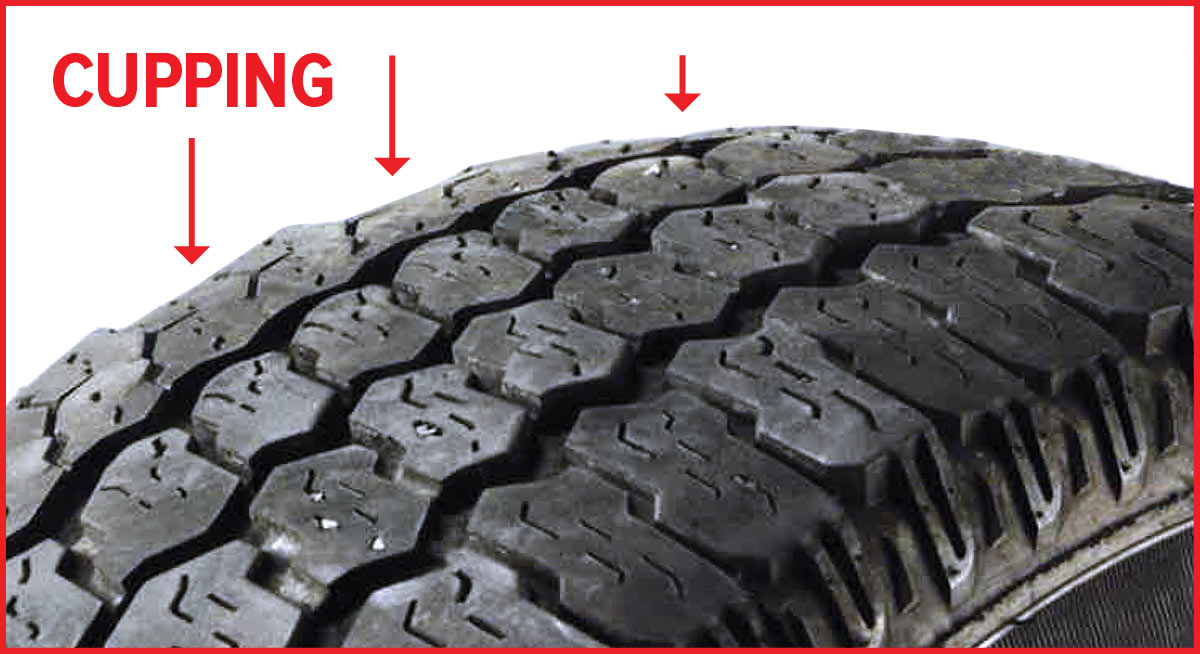
In other words, we can say that this tire pressure warning system can only work when the tire pressure is significantly less than necessary by an order of magnitude. And this means that you run the risk of driving for a long time on wheels with insufficient air pressure . How it looks like Side tread blocks usually similar to bird plumage have special wear. The lower edges of the tread blocks are rounded, while the higher edges of the blocks remain sharp. Note that you cannot visually notice this type of wear. This can only be understood when examining the tread from the edge and by touch, i.e., it can only be understood with the help of hands.
Cause: - With this type of tread wear, the ball joints and the wheel bearing must first be checked.
It is also necessary to check the stabilizer bushing, which, in case of failure, can lead to improper operation of the suspension stabilizer itself, which ultimately will lead to this type of rubber tread wear.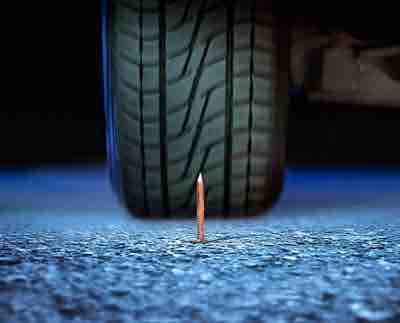
What it looks like. One spot on a wheel has more wear than the other spot.
Cause: -Single wear spots on the surface of the tire are often found when forced to brake hard or during a sharp skid, as well as when taxiing out of a serious situation in order to avoid an impact (for example, if an elk or other animal did not suddenly run into the road ). Especially such (similar) wear will be visible after heavy braking with simultaneous skidding if the car does not have an anti-lock braking system.
The thing is, when braking hard and steering away from the impact, a car without ABS is more prone to skid with locked wheels, which will lead to something like this kind of worn spot on the tire tread.
Tire stains can also appear in cars that have been parked for a long time and have not been driven anywhere.
Remember friends that when you park your car for a long time, you risk tires, where wear spots will appear on the tires due to uneven distribution of the weight of the car.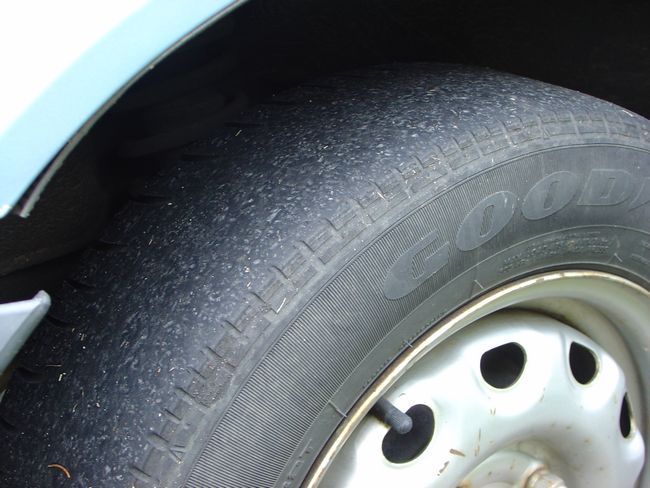 The fact is that during parking, the rubber tread does not fully come into contact with the surface, and as a result, a certain section of rubber begins to deform from this long parking.
The fact is that during parking, the rubber tread does not fully come into contact with the surface, and as a result, a certain section of rubber begins to deform from this long parking.
What it looks like. The leading edge of the tread block is worn, and the rear of the tread block has sharper corners. Please note that this type of wear may not be visible during visual inspection. Therefore, it is necessary to check the tire tread from the edge by hand. If you notice that some tread corners are sharper (like hacksaw teeth) compared to other tread edges that are smoother, then this is real tread wear and not the norm, as many drivers usually assume.
Cause: - This is the most common tire wear. Since this type of tire wear is very common and many car owners first of all think that this is the norm, this is far from being the case. In fact, this wear indicates to us that the wheel has insufficient rotation and therefore, it is necessary to check the technical condition of your machine in a technical center.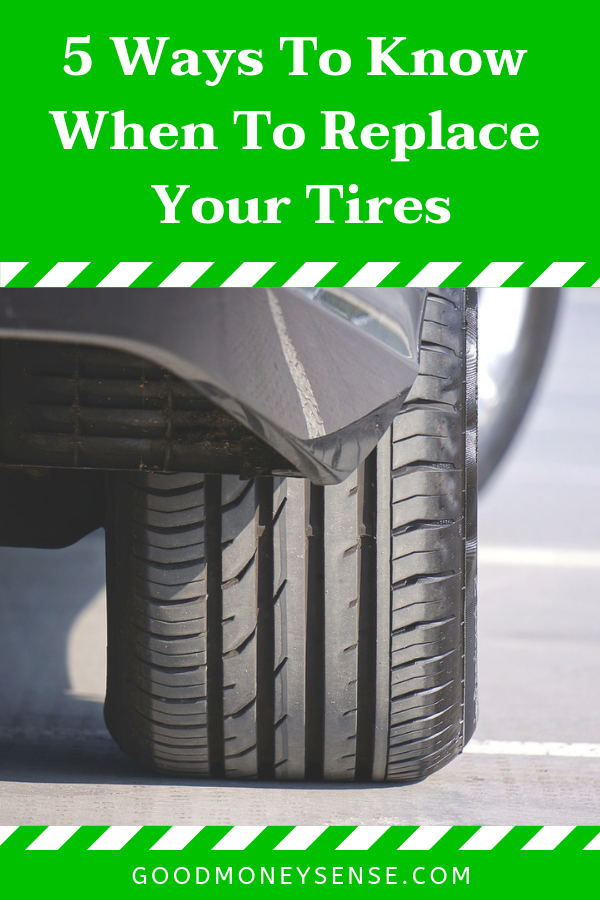
Most often, this reason is associated with wear of the suspension elements (salint blocks), wear of ball bearings, and wear of the wheel bearing.
What it looks like. One side of the tire is worn more than the other.
Cause: -Usually, with this type of wear, the cause may be incorrect camber of the car. This type of uneven wear of the rubber tread is primarily due to the fact that the wheel is uneven on the road surface due to improper wheel alignment.
To align the wheel with the road surface you need to adjust the camber.
Similar wear can also occur: with damaged springs, ball joints and damaged suspension bushings. Including this one-sided uneven wear of the tread can also appear when transporting heavy loads on this vehicle.
In addition, some powerful sports cars have a special wheel alignment that causes this uneven tire wear. But this is rare.
But this is rare.
What it looks like. Many tires have wear indicators between the tread. As a rule, these are special inserts that help you determine by eye when it is necessary to replace worn tires with new ones. Usually the height of these inserts is lower than the height of the tread itself. As soon as the tire tread height is equal to the wear indicators, it is necessary to purchase new tires.
Reason: -Usually, this replacement of rubber should occur after the tread height has become lower than recommended by the tire manufacturer. It's not always easy to tell by eye. Therefore, many tire manufacturers install wear indicators on tires (between the tread). As soon as the tread height wears down to the height that the indicators have, then it's time to change the wheels to new ones.
A rubber tread with a certain depth is needed to wick water away from the tire and prevent the car from hydroplaning on wet roads.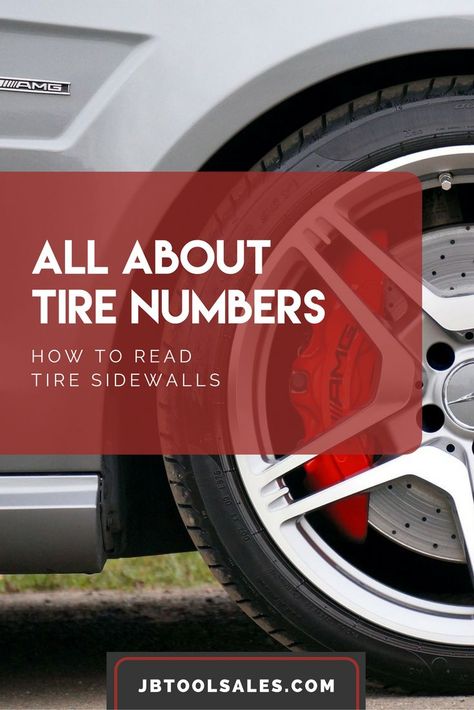
If your tires do not have a wear indicator, you can measure the tread depth yourself to see if it's time to buy new tires. To do this, you need to use any coin that needs to be inserted into the protector with an edge and measure the depth with it. You can read more about traditional tire wear or read our infographic here.
Attention! For summer tires, the minimum tread depth must be at least 1.6; 2 or 3 mm (depending on the rubber manufacturer).
For winter tires, the minimum safe tread height must be at least 4 - 6 mm.
History
Categories
Products
Cars
All results
03/20/2017
How to determine tire wear? At first glance, everything seems simpler than simple, it is necessary to divide the remaining tread height by the original height, however, the result of these actions will be erroneous.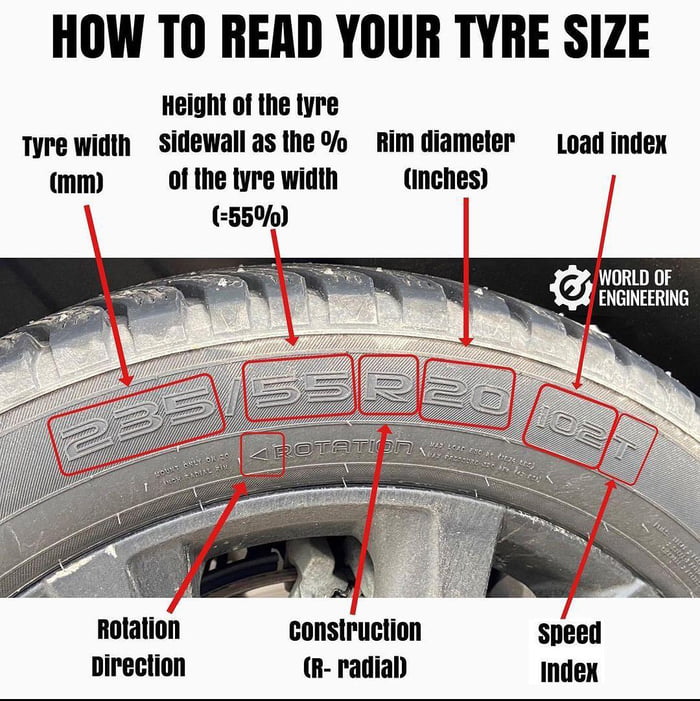 So how do you know when it's time to start thinking about buying new tires?
So how do you know when it's time to start thinking about buying new tires?
To find out the residual tread height, you need to measure both tires from the same axle and select the minimum tread height from the obtained ones.
According to the traffic rules, 2 mm is a critical mark, but it should be understood that this indicator can only be applied to summer tires, and even then not to all. Winter will lose its main characteristics already by 4 mm. Therefore, your real minimum tread will be in the range from 2 to 4 mm, depending on the type of tire, seasonality, as well as on your individual operating conditions.
For such a simple measurement, you will need any suitable device: for example, a caliper or a ruler with a depth gauge. You can also use an ordinary coin inserted into one of the grooves on the tire. If the tread hides only the rim of the coin, you need to change the tire, but if half the coin is hidden, then there is no point in thinking about buying a new one. However, with such a measurement, the accuracy of your measurements suffers, and you will not receive accurate data on the uniformity of wear.
However, with such a measurement, the accuracy of your measurements suffers, and you will not receive accurate data on the uniformity of wear.
The tire tread height must be measured at a minimum of 6 points. For example, in the center and on both edges of the tread, as well as at points around the circumference of the tire. Important: the measurement results at all points must match !
1. The tread is higher at the edges than at the center. This indicates that the tire has been inflated for a long time. As a result of this use, the load on the power carcass of the tire has been increased. Driving on this tire is not recommended.
2. Tread higher in the center than at the edges means the tire has not been underinflated. If there are no obvious signs of driving on a completely flat tire (the pattern is erased from the upper part of the sidewalls), then you can still ride on such a tire, but even in this case, wear must be determined by the minimum tread height.
3. The tread is unevenly worn across the width (one of the edges of the tire is worn out). Such wear indicates a faulty vehicle suspension.
4. The tread is worn unevenly around the wheel circumference (the central or side blocks have different heights at different points on the circumference). Such wear indicates the "extreme" preferences of the owner. The tire has most likely seen extreme braking and/or acceleration. This tire can be safely scrapped.
5. Erased pattern (pattern) in the upper part of the sidewall of the tire (junction with the tread area - the rubber is “chewed”). A similar defect is the result of a long drive on a badly flat tire. This tire is not recommended.
6. Different tread wear on two tires from a pair (from the same axle). Such wear indicates a malfunction of the suspension (wheel alignment). If the difference in tread height is greater than 1 mm, there is a risk of uncontrolled skidding if such a pair of wheels is installed on the front axle of the car.